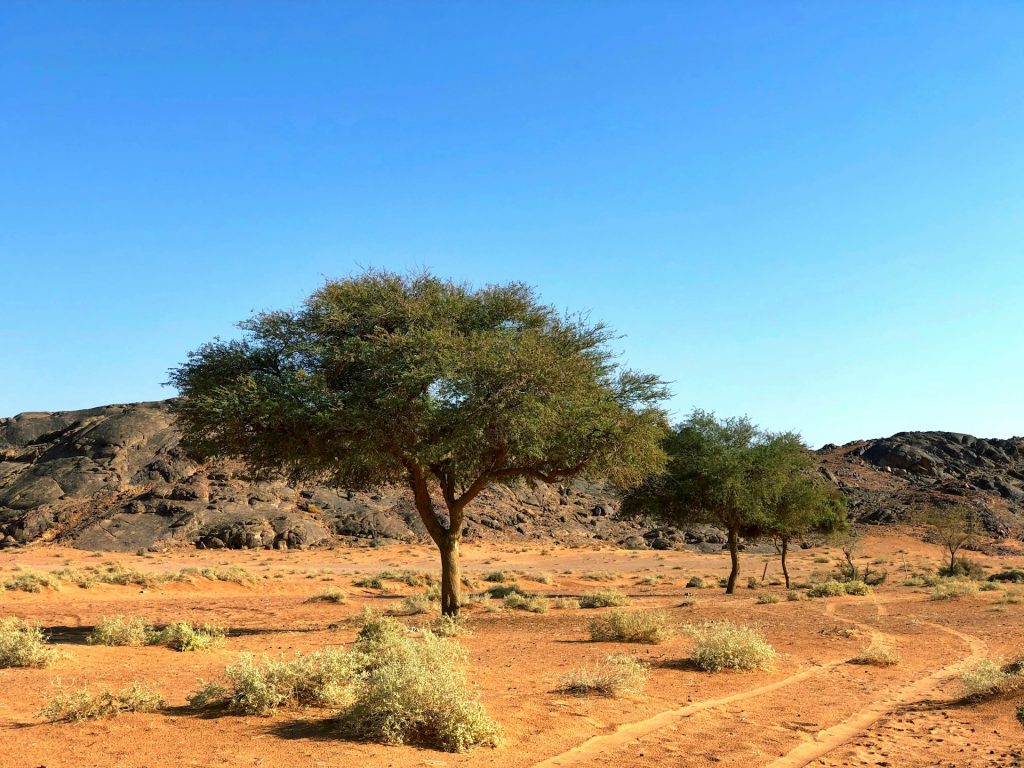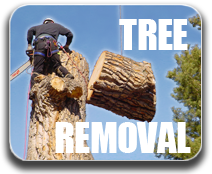All Valley Landscaping: A Comprehensive Guide to Landscaping in Arid Climates
April 10, 2025Landscaping is a critical aspect of property design and maintenance, particularly in regions with unique environmental challenges. In desert environments like Arizona, landscaping techniques must be adapted to deal with high temperatures, minimal rainfall, and specific soil conditions. All Valley Landscaping specializes in creating beautiful, functional landscapes in these areas, with a strong focus on sustainable, water-efficient practices.

This comprehensive guide delves into key landscaping techniques and considerations for arid climates, specifically in the context of Arizona. We will explore desert landscaping, popular native plants, efficient irrigation methods, gravel landscaping, tree removal and trimming, sustainable landscaping practices, and the specific challenges faced by homeowners and commercial properties in the Phoenix area.
1. Desert Landscaping: Creating Beauty in Arid Climates
Definition: Desert landscaping refers to the use of techniques and plants that are specifically suited to arid, dry environments. These techniques help conserve water while creating a visually appealing outdoor space.
Related Concepts:
- Xeriscaping: A water-efficient landscaping technique that uses drought-tolerant plants and efficient irrigation methods to reduce water consumption. Xeriscaping is an ideal choice for desert environments where water is scarce.
- Drought-Tolerant Plants: These plants are adapted to survive with minimal water. Many drought-tolerant species have deep root systems, thick waxy leaves, and other features that allow them to retain moisture. Popular examples include succulents, cacti, and certain grasses.
- Soil Types in Desert Environments: Soils in desert areas are often sandy, rocky, or clay-heavy, with low organic matter. Understanding the composition of the soil is essential for choosing appropriate plants and creating a landscape that thrives under dry conditions.
Best Practices:
- Use of Mulch to Retain Soil Moisture: Mulch is essential in desert landscaping. It helps prevent water evaporation, keeps the soil temperature stable, and provides nutrients as it decomposes. Organic mulches such as wood chips, bark, or straw are common choices.
- Grouping Plants by Water Needs: In arid climates, it’s essential to group plants with similar water requirements together. This helps avoid overwatering or underwatering specific plants, which can be detrimental to their health.
- Installing Efficient Irrigation Systems: Water efficiency is paramount in desert landscaping. Drip irrigation systems, which deliver water directly to the roots of plants, are much more efficient than traditional sprinkler systems. They reduce water waste and promote healthier plant growth.
2. Arizona Native Plants: The Heart of Desert Landscaping
Popular Choices:
- Palo Verde: Arizona’s state tree, the Palo Verde, is known for its green bark and bright yellow flowers. It is drought-tolerant, requires minimal maintenance, and provides much-needed shade in desert landscapes.
- Agave: Agave plants are iconic in desert landscapes. With their bold, sculptural appearance and minimal water needs, they are perfect for xeriscaping. Some species also produce beautiful flowers that attract pollinators.
- Red Yucca: Known for its striking red flowers, the Red Yucca is another hardy plant that thrives in Arizona’s climate. It attracts hummingbirds and butterflies, adding life to the landscape.
- Desert Marigold: A vibrant yellow flower, the Desert Marigold adds color to desert landscapes. It is highly tolerant of heat and drought, making it ideal for xeriscaping.
Benefits:
- Require Less Water: Native plants are adapted to Arizona’s arid climate and need significantly less water than non-native species. Once established, they can survive with little to no additional watering.
- Thrive in Native Soil and Temperature Conditions: Arizona native plants are naturally suited to the state’s soil types and temperature extremes. They require less fertilization and are more resistant to pests and diseases.
- Support Local Ecosystems: Native plants provide habitat and food for local wildlife, including birds, bees, and butterflies. By planting native species, homeowners can contribute to the local ecosystem and biodiversity.
3. Sprinkler Systems in Arid Climates: Maximizing Water Efficiency
Key Elements:
- Drip Irrigation vs Traditional Sprinkler Heads: Traditional sprinkler systems often waste water by spraying large areas indiscriminately, leading to runoff and evaporation. Drip irrigation systems, on the other hand, deliver water directly to the roots of plants, minimizing waste and ensuring that water goes where it’s needed most.
- Smart Irrigation Controllers: These advanced systems use weather data to adjust watering schedules automatically. Smart controllers can prevent overwatering during rain, adjust for temperature changes, and optimize water usage, making them a great investment for desert landscaping.
Challenges:
- Water Evaporation: In hot climates like Arizona, water can evaporate quickly when applied through traditional sprinklers, especially during the summer months. This makes efficient irrigation even more critical.
- Timing and Scheduling for Efficiency: Watering too frequently or at the wrong times of day (like in the afternoon when temperatures are highest) can lead to water waste. Proper scheduling of irrigation systems is key to minimizing evaporation and ensuring that plants receive adequate moisture.
Solutions:
- Installing Underground Systems: Underground irrigation systems, such as drip irrigation, are ideal for desert landscaping. These systems prevent water from evaporating and direct it precisely to where plants need it.
- Using Moisture Sensors: Moisture sensors are an excellent addition to irrigation systems. They can detect when the soil is sufficiently moist and adjust watering schedules accordingly, preventing overwatering and ensuring that plants are not stressed from a lack of water.
4. Gravel Landscaping: The Practicality and Beauty of Stone
Uses:
- Ground Cover: Gravel is commonly used as a ground cover in desert landscapes. It prevents weed growth, reduces the need for frequent mowing, and provides a clean, modern look to outdoor spaces.
- Decorative Pathways: Gravel is often used to create walkways or garden paths. It’s both functional and aesthetically pleasing, allowing for easy movement through the landscape while complementing the natural environment.
- Weed Prevention: Gravel’s dense texture prevents weeds from taking root. When laid down properly with a weed barrier fabric underneath, it helps reduce maintenance and keeps the landscape looking neat.
Types:
- Decomposed Granite: A popular choice for desert landscaping, decomposed granite is small, crushed rock that is compacted to form a stable surface. It comes in various colors and blends well with other desert elements.
- River Rock: Smooth, rounded stones, river rock creates a natural look and is often used in dry riverbeds, decorative features, or as ground cover.
- Crushed Stone: Crushed stone is another versatile material. It is available in a variety of sizes and colors, making it suitable for different design elements like borders or as a filler material.
Maintenance Tips:
- Weed Barrier Fabric: To prevent weeds from growing through the gravel, installing a weed barrier fabric beneath the gravel is essential. This fabric allows water to drain while keeping unwanted plants at bay.
- Periodic Raking and Replenishment: Over time, gravel may shift, or some particles may settle. Regular raking can help maintain an even surface. Additionally, replenishing gravel every few years ensures the landscape stays looking fresh.
5. Tree Removal and Trimming: Maintaining Safety and Aesthetics
Reasons for Service:
- Safety Hazards: Trees can pose safety risks if they are too close to power lines or structures. Overgrown branches can also fall during storms, creating hazards for people and property.
- Storm Damage: Arizona is subject to monsoon seasons, which can bring strong winds and heavy rain. Tree trimming ensures that trees are well-pruned and less likely to suffer damage during storms.
- Disease or Rot: Trees that are diseased or infested with pests can quickly become liabilities. Professional tree removal and trimming can help prevent the spread of disease and ensure the overall health of the landscape.
Techniques:
- Crown Thinning: This technique involves selectively removing branches from the crown of the tree to allow for better airflow and sunlight penetration. It helps prevent overcrowding and promotes healthy growth.
- Deadwooding: Deadwooding involves removing dead or dying branches. This improves the appearance of the tree and reduces the risk of disease or pests.
- Directional Pruning: Directional pruning involves cutting branches in such a way that they grow in a specific direction. This technique is often used to shape trees or to prevent branches from growing too close to structures.
Licensing & Permits (Arizona-specific): In Arizona, tree removal and trimming often require specific permits, particularly for large trees or those located near protected areas. It is important to consult with a licensed professional to ensure compliance with local regulations.
6. Sustainable Landscaping: Creating Eco-Friendly Outdoor Spaces
Principles:
- Reduce Water Use: Water conservation is a key principle in sustainable landscaping. Using drought-tolerant plants, efficient irrigation systems, and mulching can significantly reduce water consumption.
- Recycle Organic Waste (Mulching): Mulching not only conserves water but also recycles organic materials, reducing waste and enriching the soil.
- Use Renewable Materials: Sustainable landscaping focuses on using renewable and environmentally-friendly materials, such as bamboo, recycled stone, and sustainable wood.
Certifications:
- LEED for Landscapes: The Leadership in Energy and Environmental Design (LEED) certification is an internationally recognized symbol of sustainability. Landscaping projects that meet LEED standards are designed to minimize environmental impact.
- EPA WaterSense: This certification indicates that a landscaping project uses water-efficient practices and products, helping conserve water resources while maintaining a beautiful outdoor space.
7. Phoenix-Specific Landscaping Challenges
Phoenix, Arizona, presents unique challenges for landscapers due to its extreme climate and soil conditions. Heatwaves, monsoon seasons, and soil composition are all factors that affect landscaping decisions.
Climate Conditions:
- Heatwaves: Phoenix regularly experiences extreme heat, with temperatures often exceeding 100°F (38°C) in the summer months. Landscaping solutions must be chosen to withstand prolonged heat.
- Monsoon Season Effects: During the monsoon season, heavy rainfall can cause erosion and flooding. Landscapes must be designed with proper drainage and water management in mind.
Soil Concerns:
- Sandy and Clay-heavy Soil: Arizona’s soil is typically a mix of sandy and clay-heavy components, which can impact plant growth. Soil amendments and proper drainage systems are essential for ensuring healthy plant development.
- Low Organic Matter: Desert soils often lack organic matter, which can make it difficult for plants to thrive. Adding compost or other organic materials can help improve soil structure and fertility.
8. Commercial vs. Residential Landscaping: Key Differences
Differences in Approach:
- Scale and Equipment: Commercial landscaping projects typically require larger-scale equipment and more extensive planning. These projects often involve maintaining vast areas of property, such as corporate campuses or shopping centers, which require more frequent care.
- Maintenance Frequency: Commercial properties generally require more frequent maintenance due to high foot traffic and the need for professional appearance. Residential landscaping, on the other hand, may have more flexible maintenance schedules.
- Aesthetic Goals: Commercial landscaping often focuses on creating a professional, uniform appearance, whereas residential landscaping tends to be more personalized and reflective of the homeowner’s preferences.
In conclusion, All Valley Landscaping provides expert services for Arizona homeowners and businesses, helping them navigate the unique challenges of desert landscaping. By embracing sustainable practices, using native plants, and installing efficient irrigation systems, Arizona residents can create beautiful, functional landscapes that thrive in the arid climate. Whether you’re looking to xeriscape your yard or maintain a commercial property, All Valley Landscaping offers the expertise and solutions you need to achieve a stunning outdoor space.








